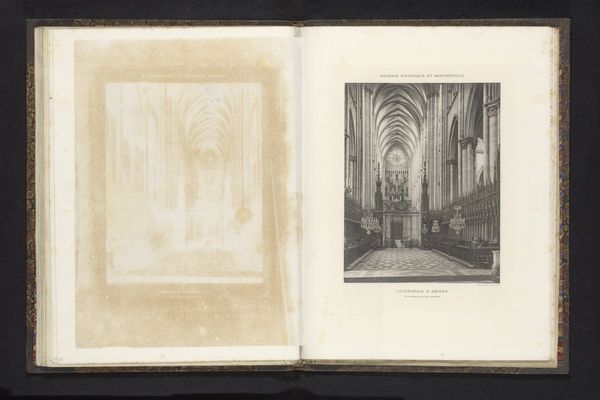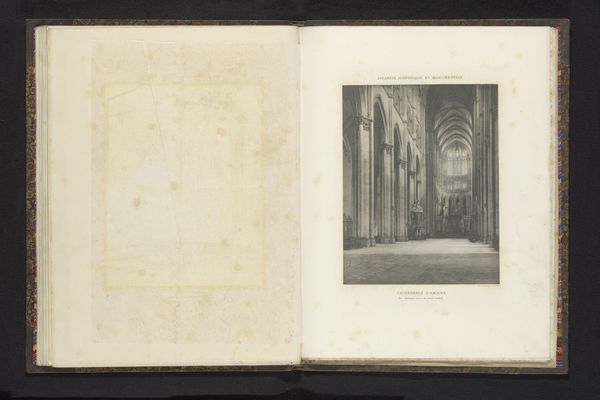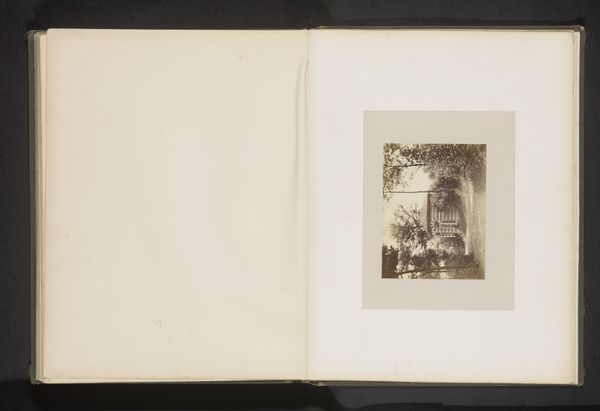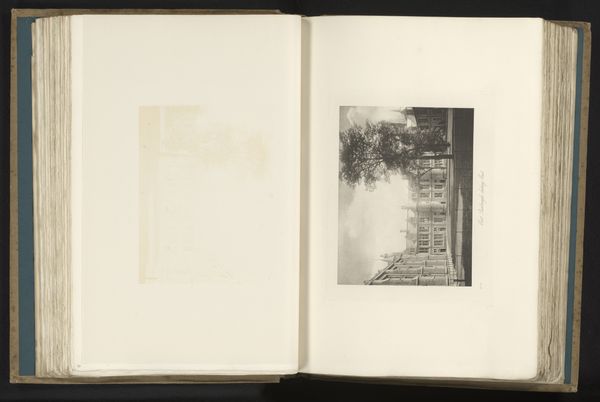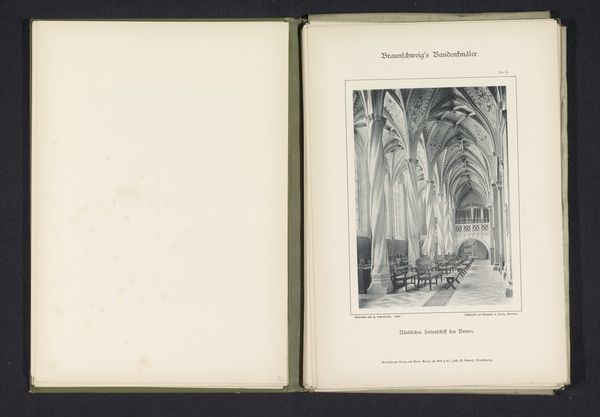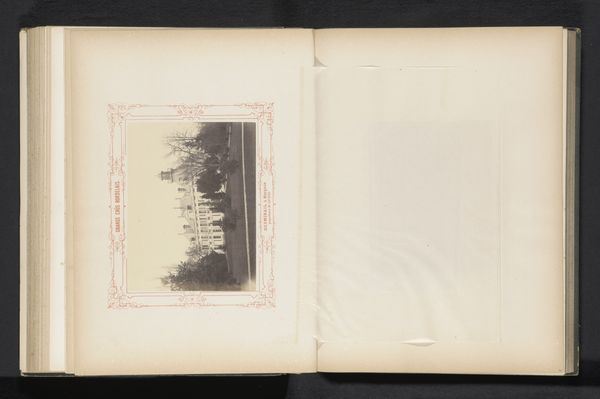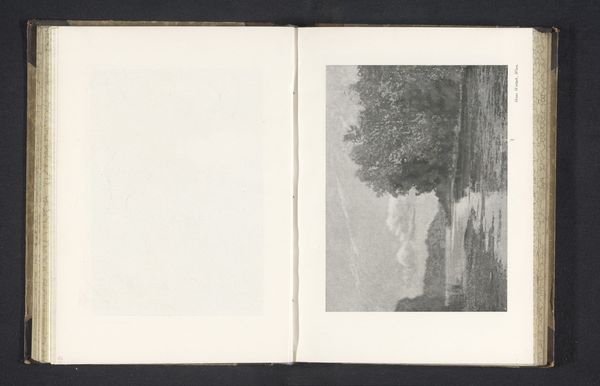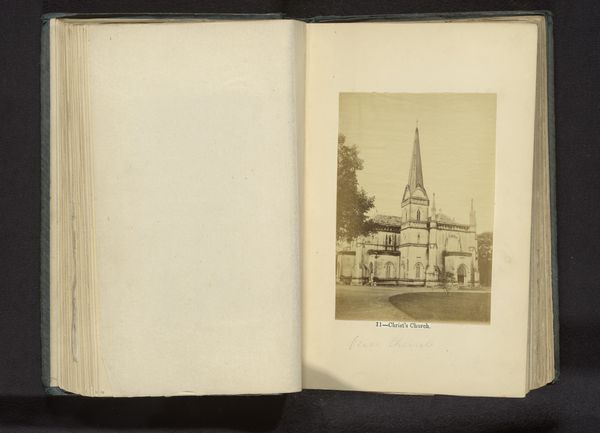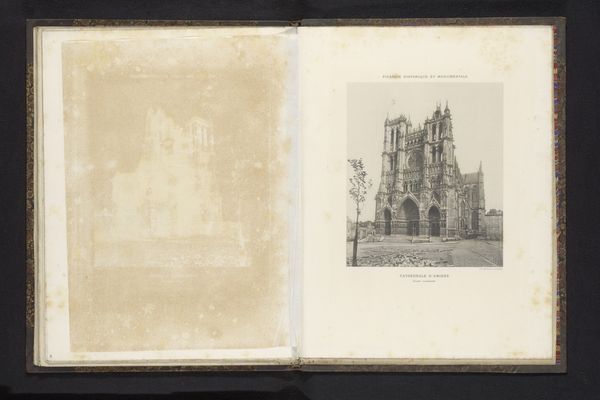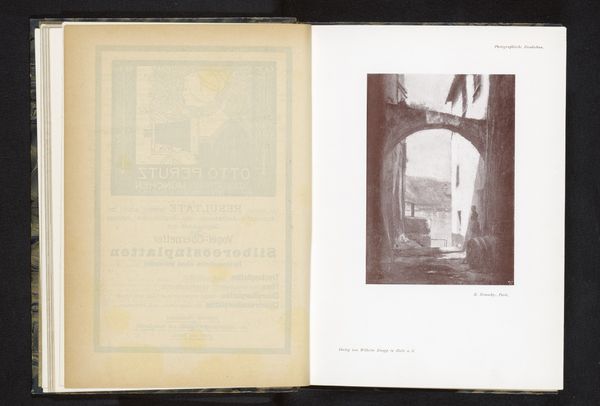
Dimensions: height 217 mm, width 169 mm
Copyright: Rijks Museum: Open Domain
Curator: So, what captures you immediately about this image, “Interieur van het transept van de Notre-Dame van Amiens," a print made before 1893? Editor: Wow, first impression: breathtaking, overwhelming even! It's that cavernous feeling you get standing inside one of those giant gothic cathedrals, that human insignificance feeling… slightly unsettling, yet inspiring, you know? The sheer height makes you tilt your head back and go "whoa." Curator: Precisely! That sense of verticality was intentionally engineered to evoke reverence, reflecting the church's power both spiritually and, historically, politically. These structures were statements. Amiens Cathedral, particularly, with its Gothic style, showcases incredible engineering for its time, intended to inspire awe and humility in the observer. Editor: The composition, right? All those lines leading upward—it's like visual poetry designed to make you contemplate… something bigger than yourself. And I love how the light filters through the stained glass. Curator: Yes, light in Gothic architecture plays a crucial role, serving as a metaphor for divine illumination. Stained glass, which unfortunately we can't fully appreciate in this monochrome image, were essentially visual sermons for a largely illiterate population. These grand cathedrals became important community gathering points in medieval life, integral in both religious and civic happenings. Editor: It does kind of feel like looking into the past, you know? The way the photography renders the stones makes me want to go find a comfy corner and daydream, listening to imaginary Gregorian chants echoing, thinking about people long gone, feeling the silence of a prayer whispered centuries ago. Am I getting too carried away? Curator: Not at all. I believe that ability to foster contemplation—is vital to understanding art. It allows the past to remain present. Editor: I suppose so, that's a thought. Thanks for giving me perspective!
Comments
No comments
Be the first to comment and join the conversation on the ultimate creative platform.
